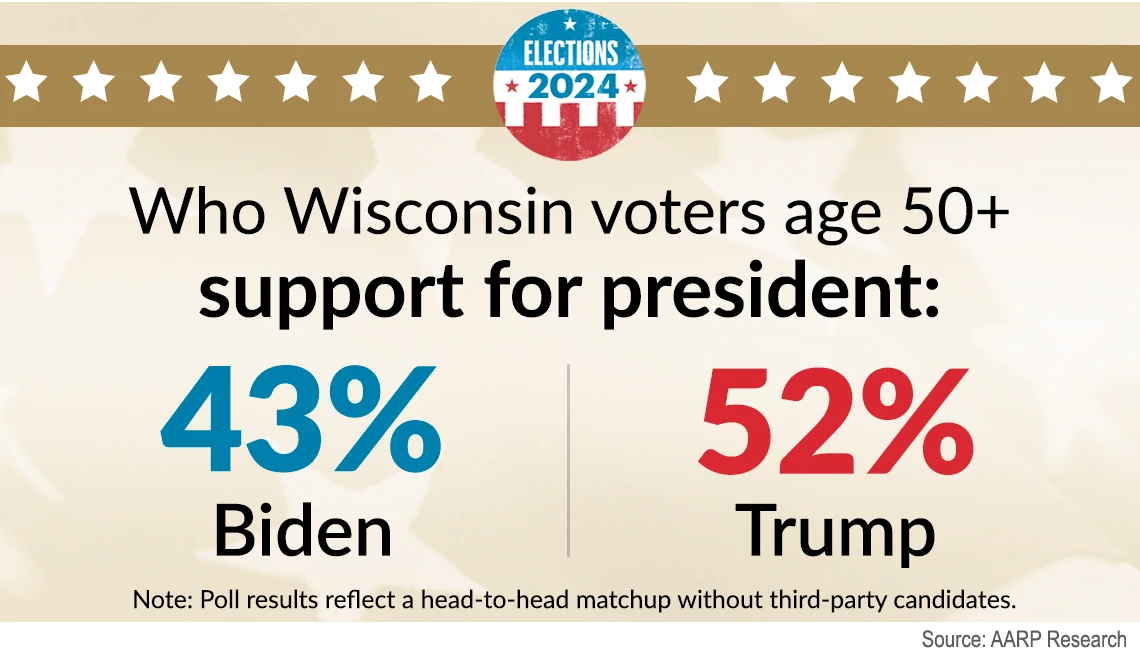AARP Hearing Center


More voters in the presidential election battleground state of Wisconsin say they would cast ballots for former President Donald Trump than for President Joe Biden if the election were held between the two candidates today, according to an exclusive new AARP survey taken after the two candidates debated.
Fifty-two percent of Wisconsin voters age 50-plus say they would support Trump, a Republican, compared with 43 percent for Biden, a Democrat — a 9 percentage point lead in a head-to-head matchup. Among Wisconsin voters of all ages, Trump’s lead narrowed to 5 percentage points.
In a race among Trump, Biden and third-party candidates, including Robert F. Kennedy Jr., Trump’s lead shrinks among voters 50-plus, with 48 percent for Trump, 41 percent for Biden, and 7 percent favoring Kennedy. Kennedy has not yet gained access to the Wisconsin ballot.
The poll was conducted by the bipartisan team Fabrizio Ward and Impact Research and included 1,052 likely Wisconsin voters interviewed between June 28 and July 2, just after the live debate June 27 between Biden and Trump.


The poll found that 75 percent of voters 50-plus said they watched the debate and 94 percent said they were aware of it. When asked who won, 59 percent of voters 50-plus said Trump, while 16 percent said Biden. Among all voters polled, 56 percent said Trump won the debate while 13 percent chose Biden.
The debate is “having an impact,” says Bob Ward, a partner at Fabrizio Ward, who noted that other polls taken earlier showed Trump ahead by an average of 1.5 percentage points.
“It’s changed this state, not dramatically, but noticeably,” Ward said.
Voters also were asked about Wisconsin’s U.S. Senate race. Among voters 50-plus, Eric Hovde, the Republican candidate, had a 3 percentage-point lead over the incumbent, Tammy Baldwin, a Democrat. Half of older voters said they’d cast ballots for Hovde versus 47 percent for Baldwin. Among voters of all ages, the lead reversed, with 50 percent favoring Baldwin versus 45 percent for Hovde.


Older voters have power
Wisconsin is among the battleground states for the presidency and provides 10 electoral votes toward the 270 total needed for the winner. In 2020, Biden won Wisconsin with a margin of just 0.63 percentage points.

































































More From AARP
AARP Poll: Battleground District Voters Split Between Trump, Biden
Trump has 3-point lead among voters 50-plus8 Things to Know About Election Disinformation and AI
Artificial intelligence spreads, amplifies falsehoodsHow Voting Laws Will Impact 2024 Elections
Some states have tightened their rules since 2020, but others have made it easier to cast a ballotRecommended for You